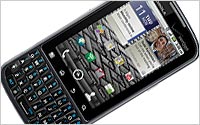Mobile Smooths Digital Divide For Some Demos
- by Gavin O'Malley @mp_gavin, April 13, 2012
 Perhaps more than any factor, the rise of mobile is bridging the digital divide for older and lower-income consumers in the United States.
Perhaps more than any factor, the rise of mobile is bridging the digital divide for older and lower-income consumers in the United States.
“The rise of mobile is changing the story,” according to Kathryn Zickuhr, a research specialist at thePew Internet Project, and co-author of its latest research report. “Groups that have traditionally been on the other side of the digital divide in basic Internet access are using wireless connections to go online.”
Among smartphone owners, young adults, minorities, those with no college experience, and those with lower household income levels are more likely than other groups to say their phone is their main source of Internet access.
Yet one in five American adults still don’t use the Web, according to Pew.
Chief among the digital abstainers are senior citizens, those who prefer to take Pew’s interviews in Spanish rather than English, adults with less than a high-school education, and those living in households earning less than $30,000 per year.
Of particular note, among adults who don’t use the Internet, nearly half say the main reason is because they don’t think the Web is relevant to them. That said, most report that they have never used the Web -- and neither has anyone in their households.
The 27% of adults living with disability in the U.S. today are significantly less likely than adults without a disability to go online -- 54% vs. 81%, according to Pew.
Mobile, however, is an important part of the evolving story of digital access, Pew finds. Indeed, 88% of American adults have a cell phone, compared to 57% who have a laptop, 19% who own an e-book reader, and 19% who have a tablet computer.
About six in 10 adults -- 63% -- go online wirelessly with one of those devices, according to Pew.
Gadget ownership is generally correlated with age, education, and household income, although some devices -- notably e-book readers and tablets -- are as popular or even more popular with adults in their 30s and 40s, than young adults 18-29.


